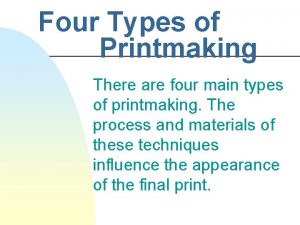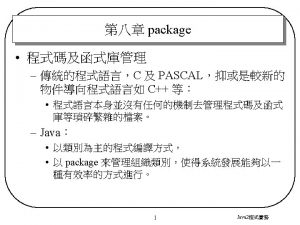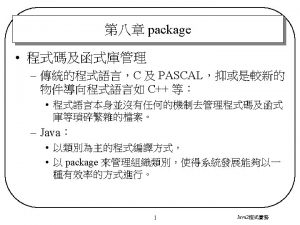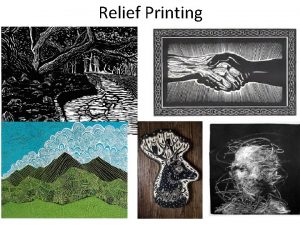UNIT THREE PACKAGE PRINTING AND ECORATING Lesson 9






- Slides: 6

UNIT THREE PACKAGE PRINTING AND ECORATING 第三单元 包装印刷 Lesson 9 Color 颜色 Introduction l Color Perception l Color Terminology l Viewing Color l

一、 Introduction l l l l l The first view of a package. recognized before shape, graphic, text content The most important motivators of a purchase decision. Associated with moods, feelings, places, and things. evokes observer’s emotional response Color has weight, size, and movement. Color can influence perceptions such as size, quality, value, and flavor, to name a few. Color has ethnic and social associations. The tendency to come in and out of fashion, dominate the marketplace. Universal rules when deciding on what colors to make a package. represent the persona of the package design and the perception of the targeted audience

二 、Color Perception l l l l The eye is a complex organ that receives light and sends stimuli to the brain for interpretation. Color perception depends on the eye's receptors and the psychology of how the brain interprets the message. The normal human eye has a retinal structure with individual receptors sensitive to red, green, and blue parts of the spectrum. Any color in the spectrum can be matched by combining these stimuli in the proper proportions. The human eye can differentiate several million colors. The human eye does not detect all colors equally. Sensitivity falls off at either end of the visible spectrum. Perceived color depends on the proportion of stimulation given each color receptor. color. )

三、 Color Terminology 1. Hue ---The color's position in the spectrum 2. Value--- The lightness or darkness of a color relative to a gray scale starting at jet black at one end and ending with white at the other. 3. Chroma---How strongly colored the object is or how much the color differs in its strength of color from a gray sample of the same value. Saturation and value reflect the color differences when a base color is mixed progressively more white for a lighter, less saturated color (a tint) or mixed with progressively more black for a darker value (a tone). l Brightness describes the total amount of reflected wavelength to a color. A key attribute when considering a substrate for printing. l Most package printing inks are transparent; light passes through them and is reflected from the substrate surface back to the observer. If the substrate surface is bright, then all wavelengths not absorbed by the pigment are reflected back. However, if the substrate absorbs some percentage of red, green, and blue, then the perceived reflected color will not appear as bright. l

四、 Viewing Color perception is highly subjective and depends on · the light illuminating the object · the nature of the object itself · the observer of the object 1. Light Source. Light has different wavelength compositions. Standardized viewing illuminations usually at temperature 0 f 5, 0000 Kelvin (K). Graphic arts light composition standardized at 5, 0000 K Visual color comparisons should be done under these conditions. Temperature of 5, 0000 K is similar to outdoor lighting at about noon. 2. Object influences color perception directly. Surface texture, gloss, geometry, and surrounding or adjacent promote optical illusions. l

四、 Viewing Color 3. Observer. Personal emotions and preferences. l Adjustments based on experience Object viewed under a fluorescent light Color-corrected by brain Photographs taken l Color perceptions altered Primary receptor suffers after image and fatigue Objective measurements with colorimeters or densitometers Numerical values to the reflected component l Instrument makes no allowance for shapes, adjacent colors, textures… Colorimetry don’t tell graphic image only verify the same as used sample. Color identified by a panel of human observers Colorimetric instrument brought in to quantify the color l











